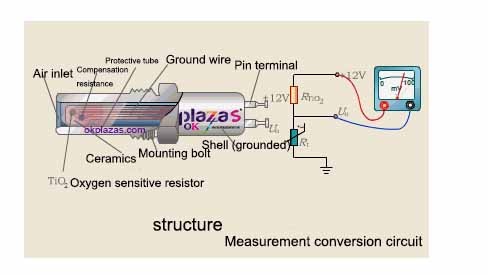How to wire the pressure sensor and wiring diagram
How to wire the pressure sensor and wiring diagram
Pressure sensors are widely used in industrial production. They are a very important production instrument. They are generally composed of sensitive components, transforming components, and measuring components, sometimes with auxiliary power supplies. The output of the pressure sensor is an analog signal. The analog signal refers to the continuous signal that the information parameter appears within a given range. Or in a continuous time interval, the characteristic quantity of its representative information can be presented as a signal of any value at any instant. In recent years, my country's pressure sensing technology is developing vigorously, and its application fields are also rapidly expanding. Due to the wide range of technologies involved in pressure sensor technology, it is now widely used in various industrial automation environments, including water conservancy and hydropower, intelligent buildings, production automation, and railways. Transportation, aerospace, petrochemical, oil well, electric power, military, machine tool, pipeline and many other industries. Before buying a pressure sensor, we need to have an in-depth understanding of it, which will help safe use in the future.

There are generally two-wire, three-wire, four-wire, and some five-wire connections for pressure sensors. The two-wire system of the pressure sensor is relatively simple. One wire is connected to the positive pole of the power supply, and the other is the signal wire connected to the negative pole of the power supply through the instrument. This is the simplest. The three-wire system of the pressure sensor is based on the two-wire system with a line that is directly connected to the negative pole of the power supply, which is a bit more troublesome than the two-wire system.
The four-wire pressure sensor must be two power input terminals, and the other two are signal output terminals. Most of the four-wire system is voltage output instead of 4-20mA output. The 4-20mA is called pressure transmitter, and most of them are made into two-wire system. The signal output of some pressure sensors is not amplified, and the full-scale output is only tens of millivolts, while some pressure sensors have an internal amplifier circuit, and the full-scale output is 0~2V. As for how to connect to the display instrument, it depends on the range of the instrument. If there is a gear suitable for the output signal, it can be measured directly, otherwise a signal adjustment circuit must be added. The five-wire pressure sensor is not much different from the four-wire system, and there are fewer five-wire sensors on the market.
Key points of pressure sensor installation:
1. Turn on the monitor before connecting the pressure sensor system.
2. Use disinfection measures to open the package, and confirm that all interfaces are securely sealed and three-way valves and other accessories are in good working condition.
Note: When connecting the connector, do not tighten it too tightly.
3. All ports of the plug valve should be covered with protective caps with holes, and the sensor system should be replaced with non-porous protective caps until the sensor system is filled with heparin saline solution and exhausted air bubbles.
4. Connect the pressure sensor to the monitor and set the monitor to zero according to the instructions of the monitor.
note:
① If the zero adjustment is not possible, please replace the sensor and re-zero; if the zero adjustment is unsuccessful, please check whether the cable connection and the monitor are normal.
②When installing DPT-248Ⅱ, CH-DPT-248Ⅲ sensors, use color coding to identify the type of blood pressure: red---arterial pressure; blue---central venous pressure; yellow---pulmonary artery pressure; green-- -Left coronary artery pressure; white---other.
5. Flush the pipeline with heparin saline, and drain the air in the road.
Note: No air bubbles remain in the pipeline.
6. After all pipes are filled with heparin saline, connect the sensor system to the human body.





